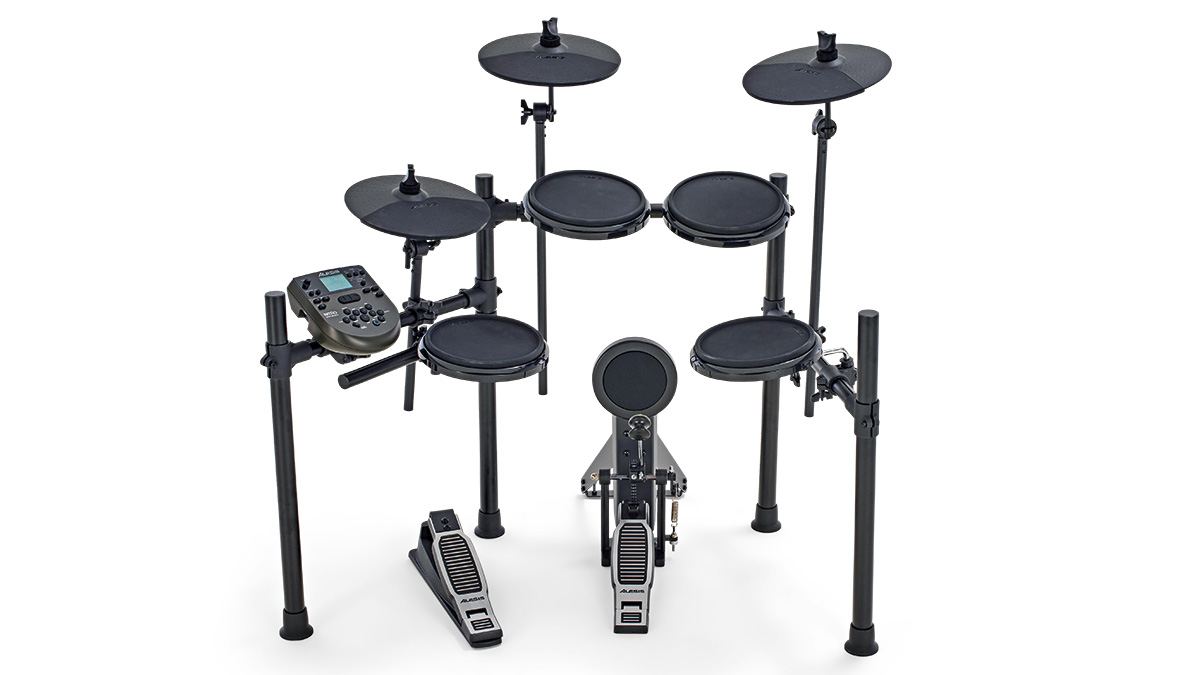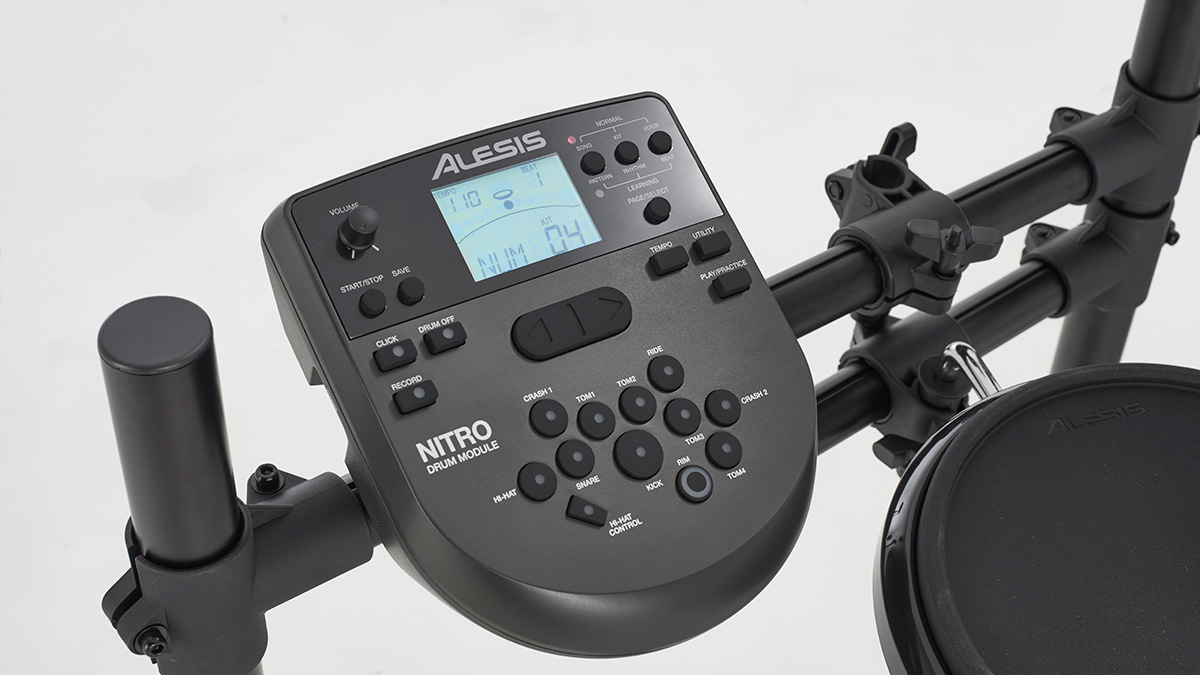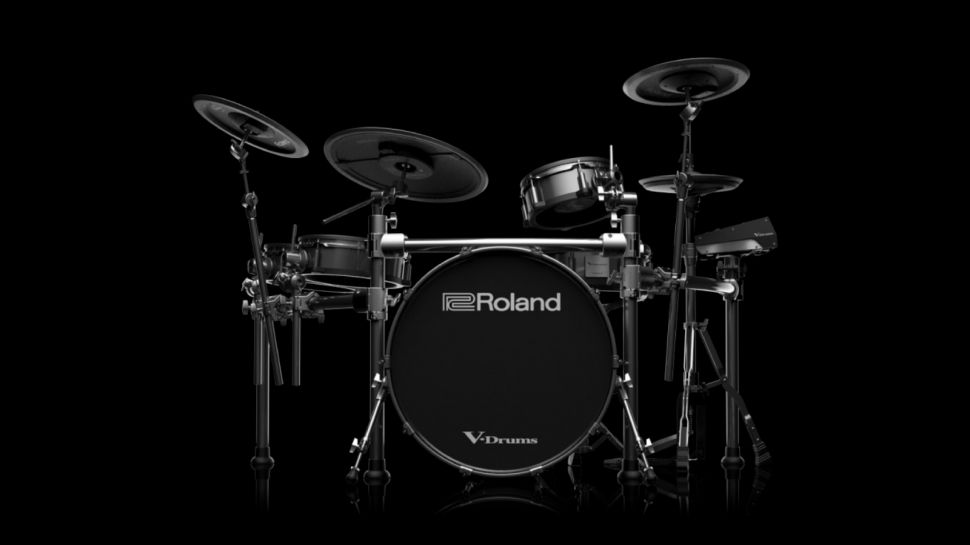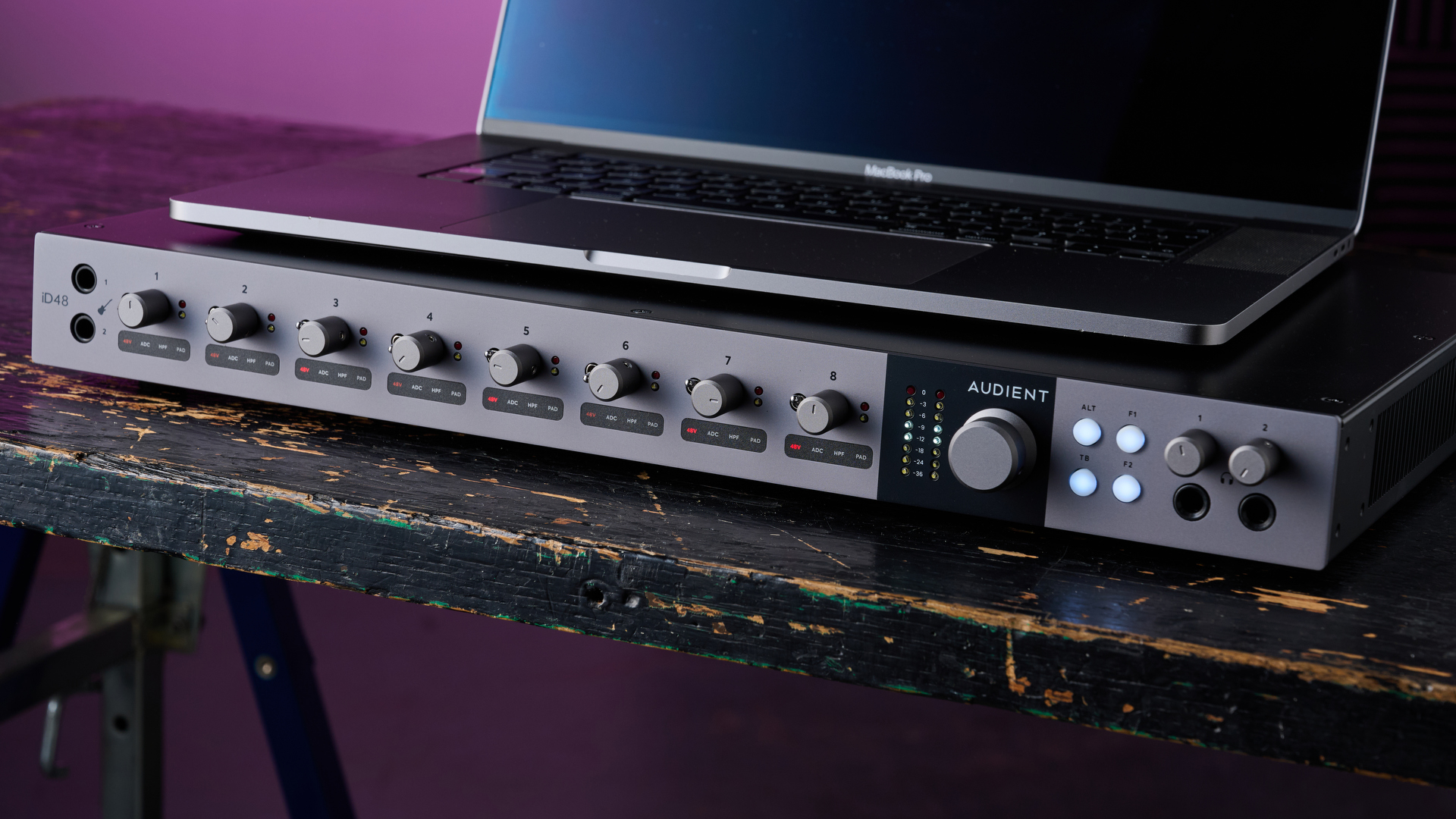MusicRadar Verdict
Yes, the Nitro is a rebranded, slightly abridged, version of the Alesis DM7X kit, it nevertheless retains an incredible spec at an impressively competitive price tag.
Pros
- +
Great price.
Cons
- -
Fewer pads than found on the DM7X.
MusicRadar's got your back

Alesis Nitro E-Kit

Alesis Nitro E-Kit
Over the years Alesis has produced an impressive array of products for us drummers - many of which have been truly ground-breaking.
This eclectic electronic selection embraces e-kits, drum machines, sample pads, drum modules etc, each at an irresistible wallet welcoming price.
Build
A quick glance over the Nitro manual reveals some great features and an impressive specification. Having 385 sounds, 60 playalong songs and an exceedingly familiar top panel - we have a feeling of déjà vu with this set-up. After further investigation (simply by turning the module on its back), voilà - we discover it's a DM7X in disguise.
The only difference we can see so far is that the module has the model name 'NITRO' printed on the top of a smart matt black housing, rather than shiny silver.
However, this new Nitro e-kit includes an 8" dual-zoned snare pad, three single-zoned tom pads, dual-zone 10" crash (chokeable), two additional single-zoned cymbal pads (one for hi-hat and ride cymbal), hi-hat controller and a complete four-post drum rack.
Also included is the Alesis DMPAD kick pad featuring a robust pressed steel housing, anti-creep spikes and a single-zone pad. To partner the kick pad there's a chunky kick pedal together with essential assembly key, sticks and manuals.
The DM7X had two further pads (one for crash cymbal and one additional tom pad), and, with the exception of the kick pad, the whole kit was dual-zone meaning rim shots were possible on the drum pad and chokeable cymbals all round.
The new module has expansion features with two jack sockets at the rear and corresponding pad buttons atop the module.
Much of the upper portion of the module is taken up by the display and various control buttons, the lower section is occupied by the 12 push-buttons. This array represents the full kit, taking into account the expansion sockets at the rear with inputs for TOM4 and CRASH2.
Hands On
Each pad attaches to the drum module via a D-type connector, which helps speed up the initial set-up avoiding plugging in loads of leads.
The Nitro instantly jumps into life with its clear monochrome display. It's worth noting that the module has a power save feature which switches the unit off if not used for a period of time. This can be user defined or even deselected but the default setting is 30 minutes.
With two dual-zoned pads at our disposal, we try a few strikes around various points on the snare pad demonstrating its acoustic-ish drum properties with rim-shots and cross sticking etc. Same with the crash which is capable of impressive chokes - great for accents when striking the kick simultaneously.
Playing around with the toms proves the layout is retained for the larger selection (DM7X) tom configuration. The default tuning for TOM3 on some of the standard kits is perhaps a little high but this may be changed easily within the intuitive menu structure.
Once the first song is selected, we immediately notice the impressive level of volume through the headphones - even when compared to some of the more expensive modules on the market.
As on the DM7X, the onboard songs are useful for getting to grips with various tempos and song structures. The practice routines are quite basic but enjoyable and the bouncing ball type metronome is a great aid for practice and instilling time keeping.
The buttons of the graphical kit layout are great for various kit/drum voice editing and this is where the module has the edge over almost any other at this price-point. Changing any of the drum and kit parameters is rapid thanks to the layout.
Editing may be done by choosing a range of parameters, striking the pad you wish to edit with a stick or indeed touching any one of the kit buttons on the module.
As each pad is struck or the corresponding button is pressed, the centre of the button lights up, which is useful for editing.
Once in the edit mode, the selected pad button remains 'lit' as a useful warning that the user is in edit mode and you're about to make to changes to that particular pad. They also illuminate during song playback to show which drums are used during the performance - good as a guide to which pad is being played at the time.
The kick tower is impressive, and one aspect which we think is greatly improved over the original DM7X which had the Alesis 'Stealth' kick pad. The feel of the rebound is excellent and, thanks to the pads grips and spikes, the pad is rock solid on a carpeted surface.
The feel is close to the type you would expect on a standard 20" bass drum - velocity sensitive and a great feeling pad as the pedal strikes, the module sounds and leaves you with a smile on your face.
“It has the ingenious ability to give you easy routing to external hardware with no re-patching”: Audient iD48 review
“If this was real, it would be really impressive. But since it’s not real, it’s really impressive": Watch the bonkers four-note piano
Watch UK electronic artist Lawrence Hart build a track from scratch in his hardware-stuffed studio










